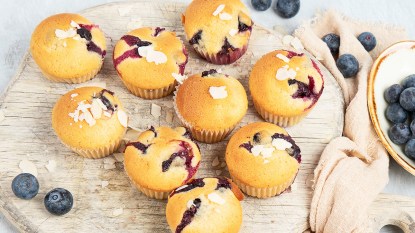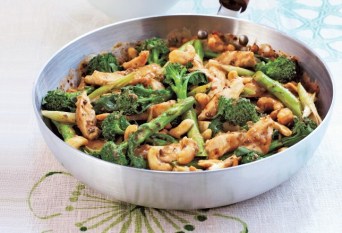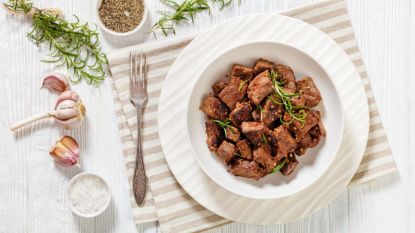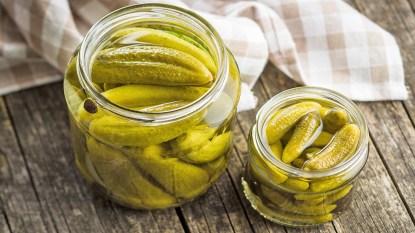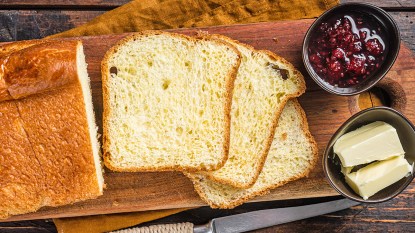This Deliciously Healthy Snack Can Boost Your Memory and Brain Health

There’s nothing like biting into a crisp, juicy apple when you need a snack. Whether you eat them on their own or cut them up and pair them with a sweet summer salad, a few slices of sharp cheddar cheese, or a swipe of peanut butter, apples have excellent health benefits to offer.
As a low-glycemic, high-fiber fruit, apples support better digestion and can help stabilize blood sugar levels, per The Journal of Nutrition. They also contain essential vitamins and nutrients that support the immune system, brain health, and eye health, including vitamin C, beta-Carotene, and vitamin A, respectively.
Interestingly, beta-Carotene isn’t the only nutrient in apples that’s helping to keep your memory sharp. A study published in the journal Stem Cell Reports found that two powerful plant compounds in apples — quercetin and dihydroxybenzoic acid (DHBA) — stimulate the production of new neurons in the brain. For those who don’t know, quercetin is a type of flavonoid found in fruits, vegetables, and grains. Flavonoids are a group of antioxidants found in a wide range of plants with antimicrobial and anti-inflammatory properties.
The findings of the study may sound questionable at first, as many of us were taught that we stop growing new brain cells as children. However, research from Cell Stem Cell in 2018 shows that the brains of older adults can create just as many new neurons as those of younger people. Still, since older adults don’t form as many blood vessels or make as many new connections between neurons, certain nutrients from their diet can help boost their brains’ ability to do so.
This is where the research into quercetin and DHBA comes in. During the Stem Cell Reports study, investigators first tested the effects of quercetin on adult mice, as they predicted that the flavonoid would have a positive impact on brain cells. Indeed, the researchers found that laboratory-grown stem cells, from the brains of the adult mice, generated more neurons that were less likely to die when they were treated with small to moderate amounts of quercetin.
From there, the research team decided to test other nutrients abundant in apples. Though they knew that the flavonoids in apples are concentrated in the peel, they investigated the benefits of apple flesh as well. In doing so, they discovered that the DHBA in apple flesh exhibited pro-neurogenic activity, meaning it benefited brain cells. Similar to the brain cells supplied with quercetin, brain cells that were fed DHBA in small to moderate amounts created more neurons. Plus, the newly-generated neurons matured more quickly.
In addition, both quercetin and DHBA had positive effects on hippocampal brain cells. These cells make up the hippocampus, the region deep inside the brain that plays a major role in learning and memory. Specifically, quercetin and DHBA promoted the survival and differentiation of hippocampal brain cells. For clarification, differentiation is the third process in the maturation of neurons.
Wondering why these two plant nutrients boost memory performance? Scientists believe that quercetin and DHBA neutralize oxidative stress in the production and upkeep of neurons. Oxidative stress occurs when free radicals, or unstable molecules generated naturally through metabolic processes, damage cells in the body. In effect, eating more apples could help prevent oxidative brain damage and keep neurons healthy.
Researchers also fed some mice apple juice to determine whether the juice had any benefits. However, apple juice had no effect on neurons or memory performance. This suggests that the true benefits of apples lie in the uncooked flesh and peel. Sorry apple pie lovers, it’s best to enjoy this fruit raw if you want it to help you better remember where you put your car keys.



